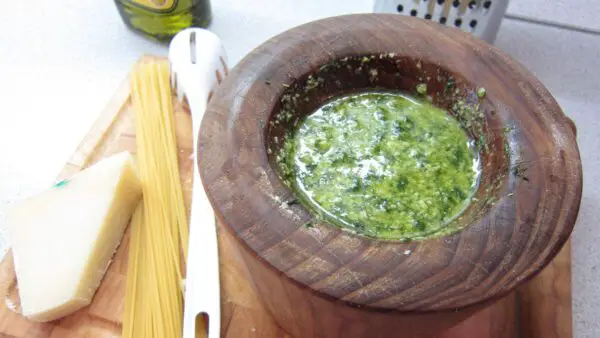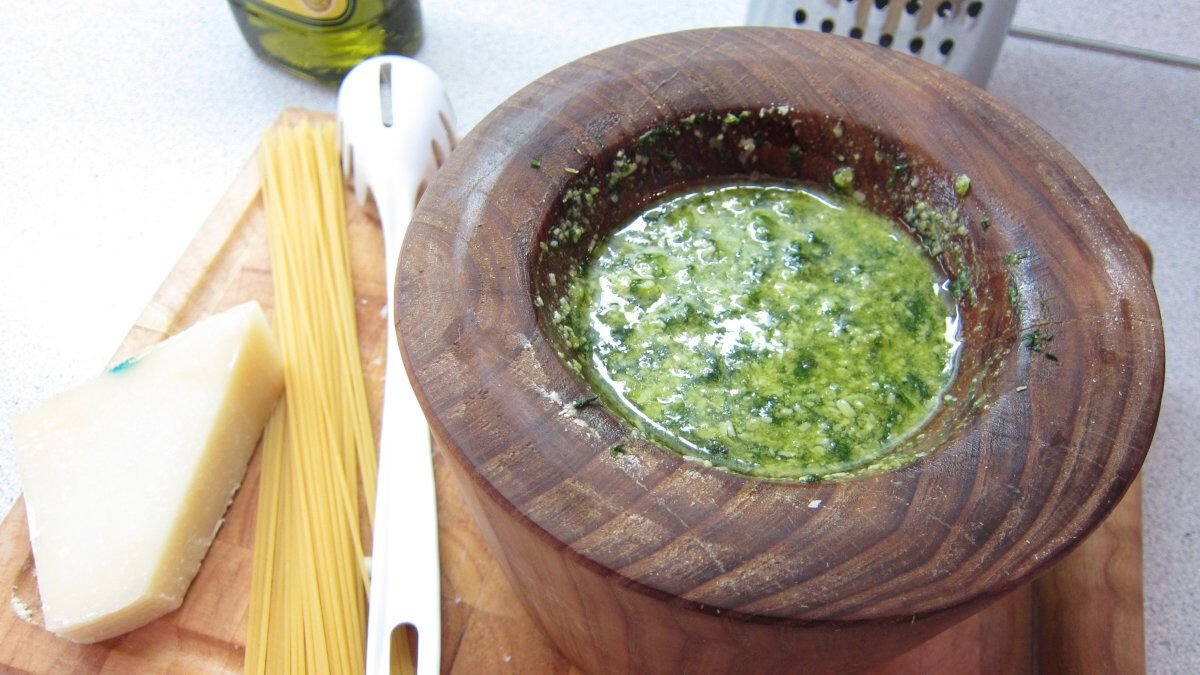Read this authentic Italian pesto recipe, and you’ll see it’s really easy to prepare. Once you try it, you’ll never buy the jarred stuff again – just like me. The delightful combination of flavors from this homemade pesto is incomparable to its shop-bought counterpart. It’s not just the flavors, but also that you know exactly which ingredients you used.
To make pesto with a hand-held blender, blender, or food processor makes things even easier than you could imagine. The original recipe says to use marble mortar; I used a wooden one. It doesn’t matter which method you choose to prepare your pesto – a modern or a traditional one – you need a device to grind the ingredients.
Chef’s Tip: do not grind it too thoroughly, as we don’t want a homogeneous sauce.
The original pesto recipe calls for Parmesan Cheese which refers to Parmiggiano Reggiano or Grana Padano. You can buy them at pretty much any grocery store. I suggest you buy a block of Parmesan cheese and grate it yourself. Sometimes, you can find Pecorino, which is available mainly in larger supermarkets and cheese shops and online. It is made from sheep’s milk and its taste is similar to Parmesan. It can be used instead of Parmesan if you prefer.
It’s essential you choose a strong, salty hard cheese. Pine nuts are also available at most large shops, but in case you can’t get them, walnut is a common substitute for pine nuts and the pesto will still taste delicious.
Homemade Pesto Tips
The amount in this recipe is for about 600 grams of pasta. It serves four as a main dish, or eight a an appetizer.
The essence of the recipe is to ‘mash’ your ingredients. That’s why the traditional method, using mortar and pestle, will give usually superior results.
The word “pesto” also refers to it, as Pesto comes from the Italian verb ‘pestare’, which literally means to crush, to mash. Traditionally, the pesto is prepared by crushing the ingredients in a mortar through the circular motion of a wooden pestle – make it gently, never too hard – Italians said it’s much about an emotional approach to food as it is physical. As you work with the pesto, you will start to see when it needs to be mashed and when a more gentle touch is required.
Adjust the salt to your liking, it enables the flavors to develop. Remember the two types of cheese you’ll add to your pesto are also salty.
In case you prepare your pesto with a hand-held blender or a food processor, you can put all the ingredients in at once. To get the right consistency, use the Pulse function to mash the ingredients and avoid continuous mixing.
Great Ways To Use And Serve Pesto Genovese
Italians use pesto as a sauce. Pesto pasta is the most popular dish made with pesto. It’s simple, which is what makes it so perfect.
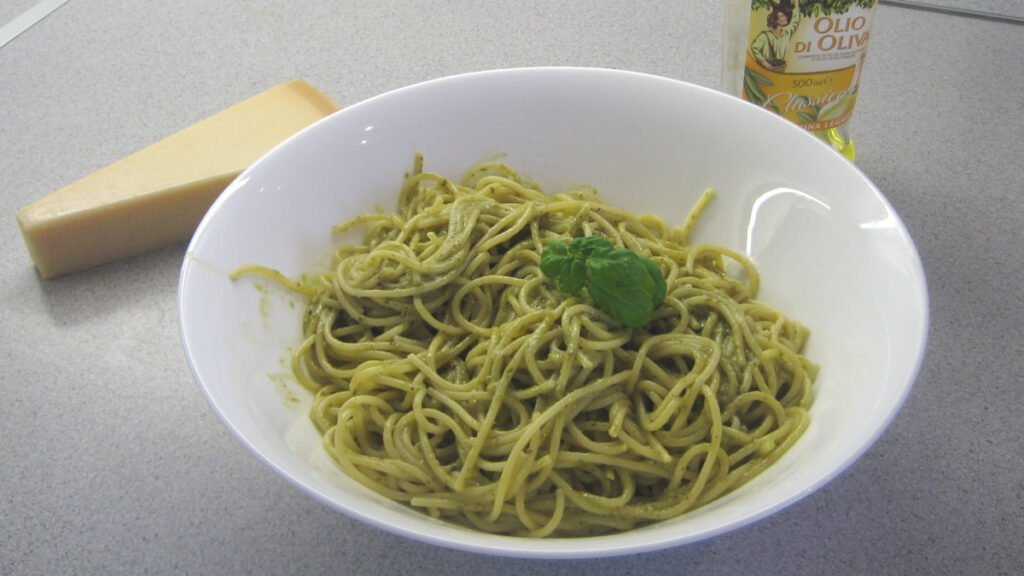
Another widespread use of pesto Genovese is to use it as an ingredient in minestrone (Italian vegetable soup), to which Italians always add a bit of pesto. You can also use pesto to rub your meat before grilling or as part of bruschetta – a delicious appetizer that is popular in Italy as well as Europe.
If you make the effort to prepare a homemade pesto Genovese, it is worth it to make it fresh. As with any other food, pesto can also be preserved. You can simply freeze it or put it into jars. If you are planning on preserving it in jars, pour olive oil about 10 mm or 1/2 inch thick on the top, and/or sterilize it in hot water. I need to note though that I’ve never preserved homemade pesto, these tips come from Italian food blogs. My best advice is that you should eat your homemade pesto Genovese fresh. It’s so delicious that I’m sure it won’t last long!

Pesto Genovese
Ingredients
- 2 cups basil leaves fresh, 50 g
- 7 tbsp olive oil extra virgin, 100 ml
- 6 tbsp Parmesan Cheese grated
- 2 tbsp Pecorino cheese grated
- 2 cloves garlic
- 1 tsp pine nuts
- salt
Instructions
- Wash your basil leaves and dry them of excess water by placing them on a paper or kitchen towel. Grate your cheese, crush garlic cloves with a knife to make it easier to mash in the mortar.
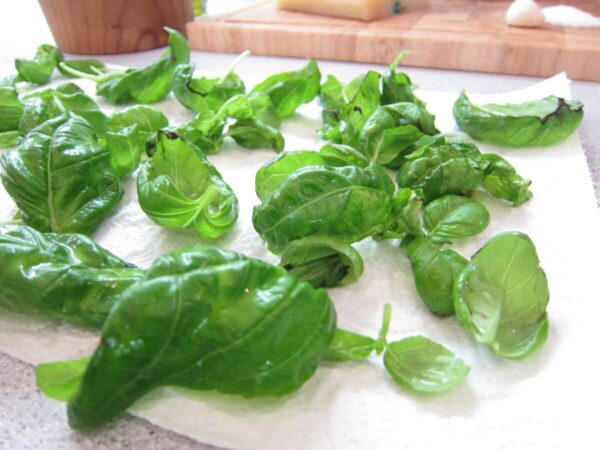
- Put the basil leaves and garlic into a mortar or a blender and start mashing them.
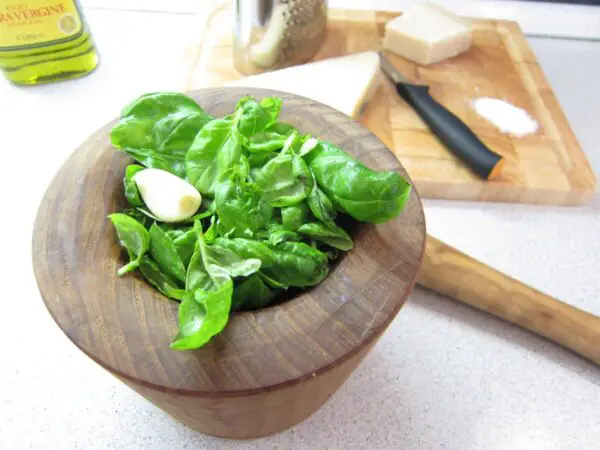
- When you get a mushy consistency with some bits of basil leaves in it, add the pine nuts and continue mashing. Pine nuts will absorb most of the moisture content of the basil leaves, and your mixture is getting to look more and more like a real pesto Genovese.
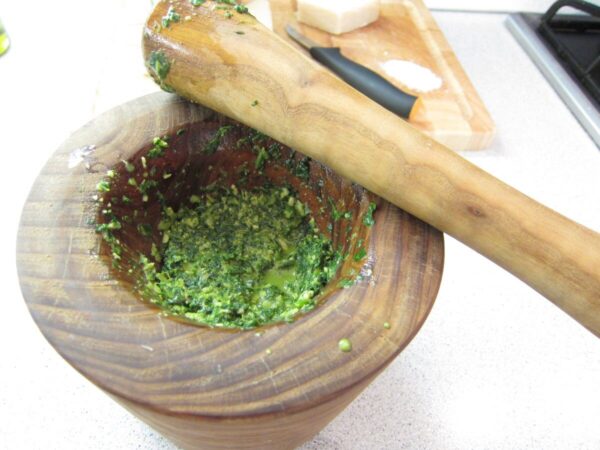
- Add the grated cheese and continue mashing. At the end of this stage your pesto will be quite dry.
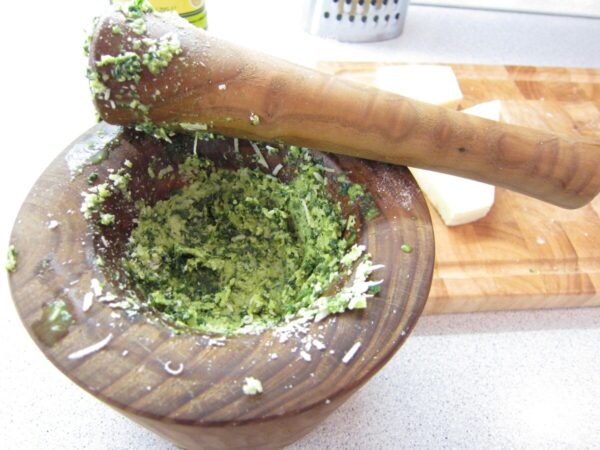
- At last, add the extra virgin olive oil and stir thoroughly.
